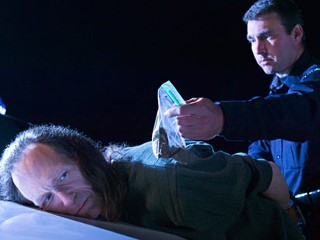This one really set off my B.S. meter: State officials hoping to shut off drug pipeline by putting in cameras.
Huh?
Illinois officials are hoping to shut off the drug pipeline between Chicago and Mexico with a few snapshots.
Illinois State Police officials, on behalf of 13 states to the south and west of Illinois, are asking for federal stimulus money to buy hundreds of special cameras that would be placed on interstates known as frequent routes for drug-runners.
The projected cost is listed at $9.9 million.
I don’t get it.
The cameras, 242 in all, would be able to record license plate numbers. That information would then be shared with other states involved in the proposal.
Most of the cameras would be mounted, but some would be placed on mobile vehicles traveling up and down interstates 55 and 80 in Illinois, as well as a handful of other cross-country routes between Illinois and Texas.
And what’s the point?
Chicago is at the heart of the proposal because it is a top destination for drugs flowing into the nation from Mexico, said Kurt Schmid, who leads the Chicago office of White House Office of Drug Control Policy, specializing in drug trafficking.
“Chicago is a major major transit point,” said Schmid.
Similarly, the same couriers who bring drugs to Chicago often return along the same routes with large sums of money or guns, Schmid said. The cameras could be used in those instances, too.
Um, OK, let me get this straight. You have a whole bunch of cameras capturing thousands of license plates traveling on a heavily used set of expressways. And you’re going to catch drug trafficking… how?
During the summer, I travel to Chicago on I-55 every week, so I suppose the cameras might find that interesting, along with hundreds of salespeople, or admissions counselors, or customer service representatives, or students going home for the weekend, or…
How is the information from these cameras going to be stored and analyzed?
How is this anything but a massive attempt at comprehensive data collection on the movement of American citizens (under the completely unexplained guise of shutting down drug trafficking)?


 I’m attempting to listen to it. I’m really a text kind of guy (I despise video or audio of talking heads – I don’t have the patience, and I’d rather read the transcript, if available). The first part was mostly softball questions and vague answers. Things like how we need to look closely at finding the right balance between treatment and enforcement.
I’m attempting to listen to it. I’m really a text kind of guy (I despise video or audio of talking heads – I don’t have the patience, and I’d rather read the transcript, if available). The first part was mostly softball questions and vague answers. Things like how we need to look closely at finding the right balance between treatment and enforcement.